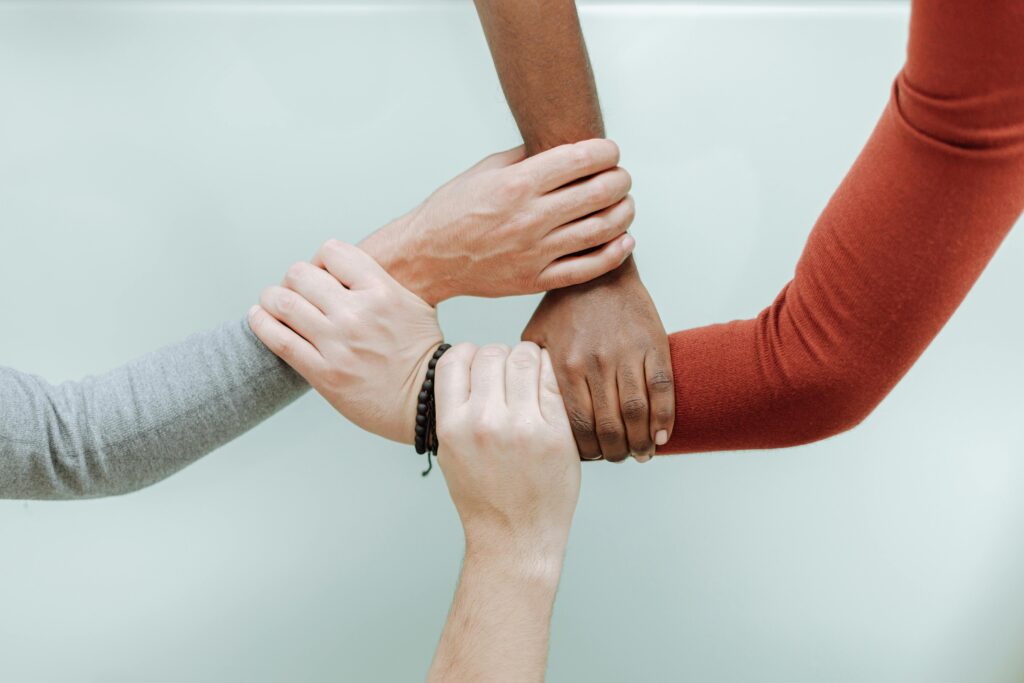Human Rights in Canada: A Fragile Shield in a Shifting World

By Catherine Waters, Director, Learning Design and Evaluation
July 9, 2025

In 2024, the Canadian Museum for Human Rights (CMHR) released its Preliminary Report from the “Foresights for Human Rights” project, drawing on national surveys conducted in 2023 and 2024. The report and the national round tables that followed—where the Institute on Governance (IOG) contributed—highlighted a tension familiar to many democracies today: a blend of aspiration and optimism and, at the same time, growing alarm.
While some Canadians remain hopeful about the future of rights and freedoms at home, the findings reveal mounting concern over the erosion of human rights globally and domestically. The report casts a sharp light on the fragility of human rights and freedoms, and how easily even widely supported legal protections can be undermined not just by political leaders, but also by civil society itself.
There is little question that recent years have seen a widening global backslide in human rights protections, as concerns about economic instability, migration and security fuel a turn to political extremism. Recent reports from Amnesty International and Human Rights Watch paint a grim picture of rising authoritarianism, civic repression, and targeted attacks on vulnerable communities, including racialized people, people in the LGBTQ+ community, and migrants.
There’s a familiar feel to Canadians’ instinct to look outward at human rights crises in other parts of the world and feel comparatively complaisant about our own domestic challenges. Yet the CMHR report offers a sobering reminder: Canada is not immune. Hard-fought advancements in human rights are fragile and require vigilance and active defense.
Survey Findings: Cautious Optimism, Growing Unease
The CMHR set out to explore what Canadians know, value, and believe about human rights today. The findings are nuanced. Two-thirds of respondents expressed hope for the future of human rights within Canada. But that optimism drops sharply when the view widens: only one-third were hopeful about the global outlook.
Some rights have seen progress, according to survey respondents. A majority felt that protections have improved over the past decade for Indigenous peoples, gender equity, and refugee and asylum seeker rights. However, confidence was far lower in areas like voting rights, racial justice, reproductive freedoms, and environmental rights. Particularly worrying was the lack of faith in access to fair trials, adequate health care, and affordable housing.
One notable bright spot: three-quarters of Canadians agreed that everyone has a responsibility to protect the rights of others in their communities. But even that solidarity faces headwinds, as the survey also documented a rising tide of anti-immigrant sentiment in Canada between 2023 and 2024.
Federalism and Human Rights: A Complex Constitutional Patchwork
In Canada, the protection of human rights plays out on two constitutional stages: federal and provincial. While the Canadian Charter of Rights and Freedoms provides a constitutional baseline for civil liberties, provinces and territories craft and enforce their own human rights codes. The Charter has been called “the law that governs laws”, blending national and local oversight; this creates a complex, sometimes contentious, legal landscape.
Each province has its own legislation—Ontario’s Human Rights Code, for example, or British Columbia’s counterpart—designed to prevent discrimination in workplaces, housing, and access to services. But overarching all of this is the Charter, part of the Constitution since 1982, which guarantees freedoms of expression, religion, equality before the law, and other fundamental rights. It applies to all levels of government and has been used as a powerful legal tool to challenge and overturn laws. There are several high-profile examples. In 1988, the Supreme Court struck down Canada’s restrictive abortion law in R. v. Morgentaler, citing a violation of the right to security of the person under Section 7. In Ontario, the 2003 case Halpern v. Canada led to the legalization of same-sex marriage, after the court ruled that excluding same-sex couples violated equality rights under Section 15.
Canadian provinces diverge in their approaches to human rights legislation in scope, enforcement mechanisms, remedies, specific protected grounds (for example social condition, political belief or association, and criminal conviction), and institutional and systemic frameworks, despite all being based on a shared constitutional commitment to equality and non-discrimination. This diversity reflects regional values, political histories, and administrative philosophies. There are trends and evolving norms that vary between provinces, such as reconciliation and Indigenous rights (actively being explored in BC and Manitoba), digital discrimination and AI and the intersection between technology and human rights (being explored in Ontario and Quebec), and the complexities of intersectionality, recognized increasingly in tribunal jurisprudence in Ontario and BC). Whatever differences may exist, there is the backstop of the Charter as the baseline of a common Canadian standard of human rights protections.
But the Charter includes a controversial opt-out: the Notwithstanding Clause (Section 33). This provision allows governments to override certain rights for five years. Quebec has used it extensively, most recently in Bill 21, which bans public servants from wearing religious symbols. In 2021, Ontario invoked the clause to impose a contract on education workers, a move that drew sharp criticism and was eventually rescinded after public outcry. So far in the history of the Charter, public opinion has been a brake on governments’ willingness to use the Notwithstanding Clause, as its use is an explicit statement of breach of human rights. This shows us that public opinion and legal protections are closely related, even when it comes to the protections in the Charter. Which underlines once again the fragility of any protections afforded by law.
Canada’s approach reflects an ongoing balancing act between rights and representation, constitutional protections and legislative power. It’s a system designed to protect freedoms, but one that also leaves room for political will to occasionally take the driver’s seat.
These examples underscore an essential truth: public opinion can serve as a final line of defense. When governments use the Notwithstanding Clause, they must explain and justify why the specific complexities of the problem require the explicit non-compliance with the Charter. If citizens push back, as they so far often do, the resulting political cost can force reversals. Legal protections, after all, are only as strong as the society willing to uphold them.
Democracy’s Drift: When Rights Fade Quietly
The erosion of human rights doesn’t always happen dramatically. Often, it happens through slow normalization: policies passed quietly, liberties traded for security, groups excluded under the guise of national interest. Institutions like the CMHR play a vital role in monitoring public opinion, keeping human rights issues and abuses in the spotlight, and keep the pressure on all Canadians to insist on high standards of human rights protections.
Canada’s human rights framework is, in many ways, a marvel of federalism and constitutional engineering. But it is also inherently vulnerable to political will, to shifting societal norms, and to complacency.